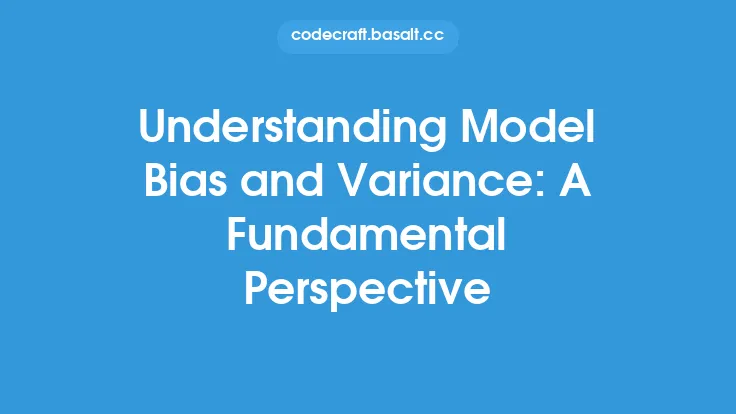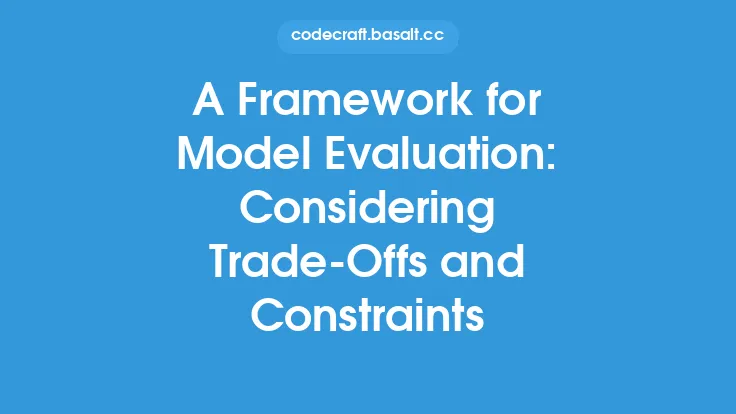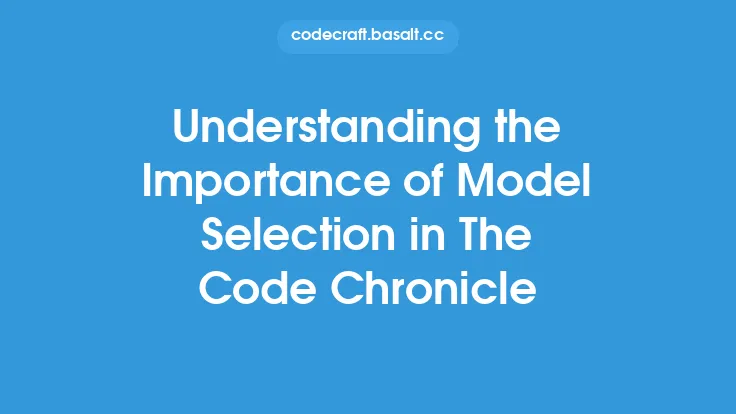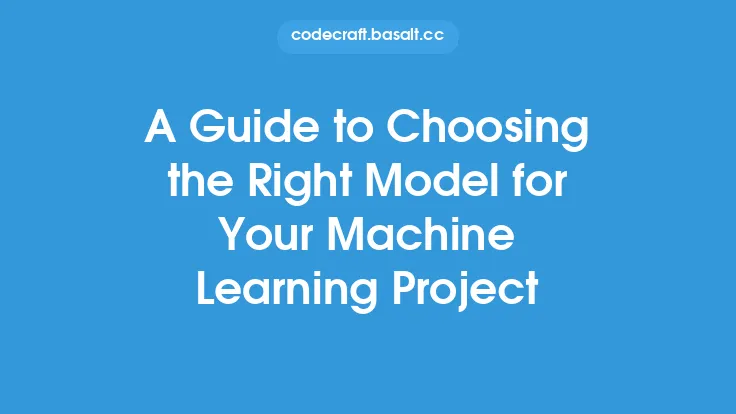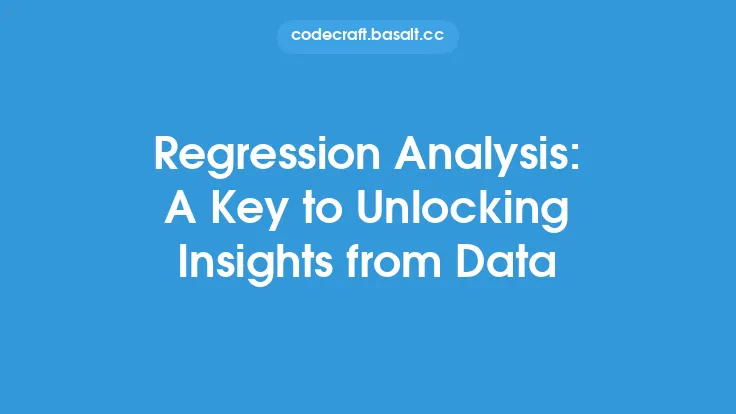In the realm of machine learning, the quest for a model that accurately predicts outcomes without being too complex or too simple is a delicate balancing act. This balance is crucial because it directly impacts the model's ability to generalize well to unseen data, a fundamental goal of machine learning. At the heart of this balancing act lies the bias-variance tradeoff, a concept that explains the inherent tension between the simplicity of a model (which can lead to underfitting) and its complexity (which can lead to overfitting). Understanding this tradeoff is essential for developing models that are neither too biased (failing to capture important patterns) nor too variable (fitting the noise in the training data).
Introduction to Bias and Variance
Bias and variance are two types of errors that occur in machine learning models. The bias of a model refers to the error introduced by simplifying a real-world problem, which can lead to underfitting. Underfitting happens when a model is too simple to capture the underlying patterns in the training data, resulting in poor performance on both the training and test sets. On the other hand, variance refers to the error introduced by the model's sensitivity to the noise in the training data. High variance leads to overfitting, where the model performs well on the training data but poorly on new, unseen data because it has learned the noise and random fluctuations in the training set rather than the underlying patterns.
The Tradeoff Explained
The bias-variance tradeoff suggests that as the complexity of a model increases, the bias decreases but the variance increases. Conversely, simpler models have higher bias (because they cannot capture the complexity of the data) but lower variance (because they are less prone to fitting the noise). The ideal model would strike a balance between these two extremes, minimizing both bias and variance to achieve the best possible performance on unseen data. This tradeoff is not unique to any particular type of machine learning model; it applies broadly across different algorithms and techniques.
Mathematical Representation
To delve deeper into the concept, let's consider a mathematical representation. Suppose we have a true function \(f(x)\) that we are trying to approximate with a model \(\hat{f}(x)\). The expected prediction error (EPE) can be decomposed into three components: bias, variance, and noise. Mathematically, this can be represented as:
\[ EPE = (Bias)^2 + Variance + Noise \]
where \(Bias = E[\hat{f}(x)] - f(x)\) measures how far the model's predictions are from the true function on average, \(Variance = E[(\hat{f}(x) - E[\hat{f}(x)])^2]\) measures the variability of the model's predictions, and \(Noise\) represents the irreducible error due to the randomness in the data. The goal is to minimize the EPE by finding an optimal balance between bias and variance.
Impact on Model Selection
The bias-variance tradeoff has significant implications for model selection. When choosing between models of varying complexities, one must consider the tradeoff. For instance, linear regression models are simple and have low variance but might have high bias if the relationship between variables is not linear. On the other hand, complex models like polynomial regression or decision trees can capture more complex relationships (reducing bias) but might overfit the data (increasing variance). Techniques such as cross-validation can help in evaluating the performance of models on unseen data, providing insights into whether a model is overfitting or underfitting.
Strategies for Managing the Tradeoff
Several strategies can be employed to manage the bias-variance tradeoff. Regularization techniques, such as L1 and L2 regularization, add a penalty term to the loss function to discourage large weights, thereby reducing overfitting. Another approach is to use ensemble methods, which combine the predictions of multiple models to reduce variance. Cross-validation, as mentioned, is invaluable for assessing how well a model will generalize. Additionally, collecting more data can help reduce overfitting by providing a more comprehensive view of the problem, although this is not always feasible.
Conclusion
The bias-variance tradeoff is a fundamental concept in machine learning that underlies the challenge of balancing model complexity. Understanding this tradeoff is crucial for developing effective machine learning models that generalize well to new data. By recognizing the interplay between bias and variance and employing strategies to manage this tradeoff, practitioners can build models that are more accurate, reliable, and applicable to real-world problems. As machine learning continues to evolve, the principles of the bias-variance tradeoff will remain a cornerstone of model development, guiding the creation of models that are neither too simple nor too complex, but just right for the task at hand.
